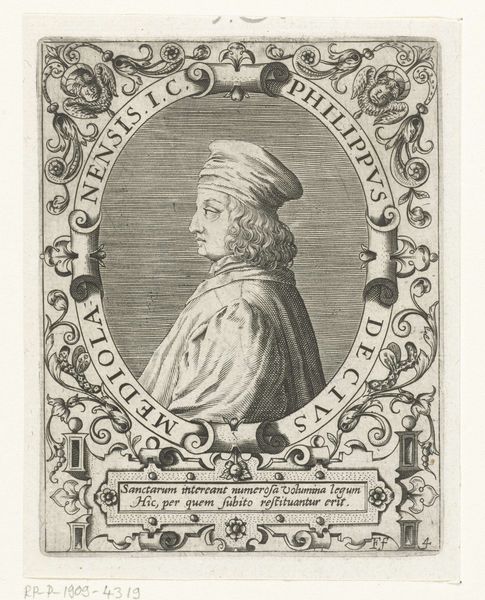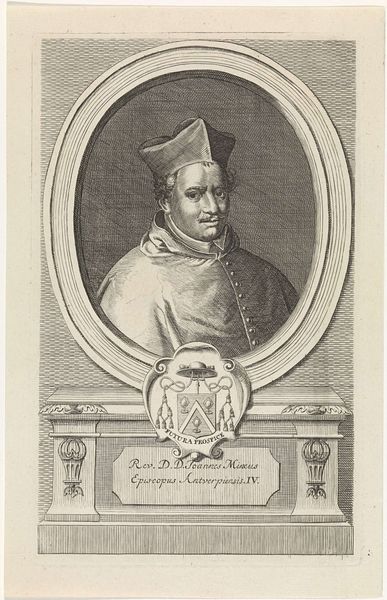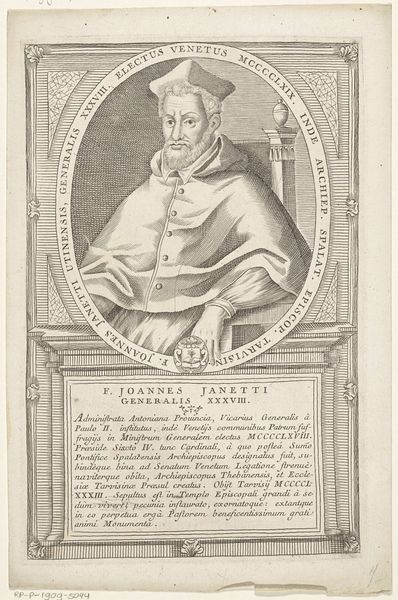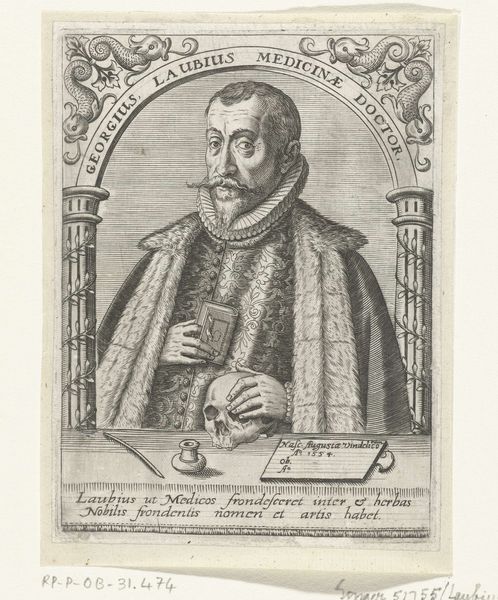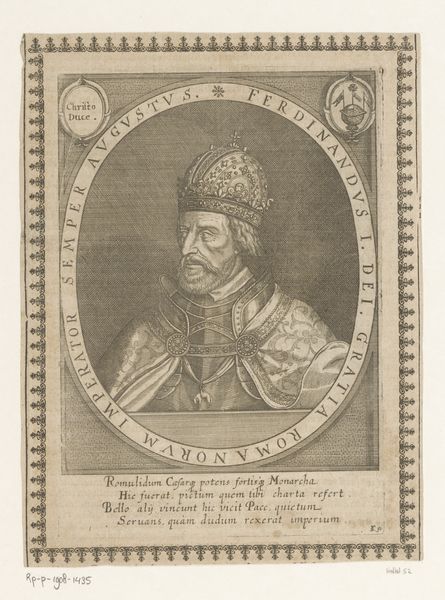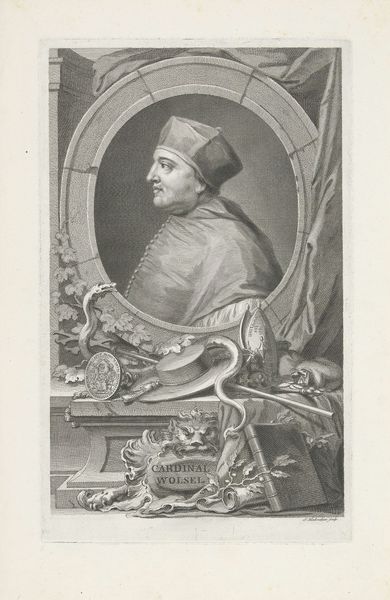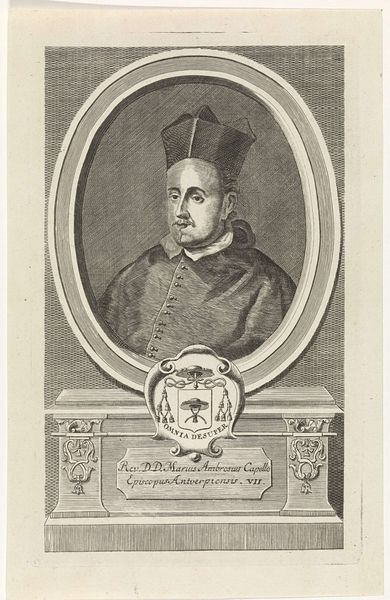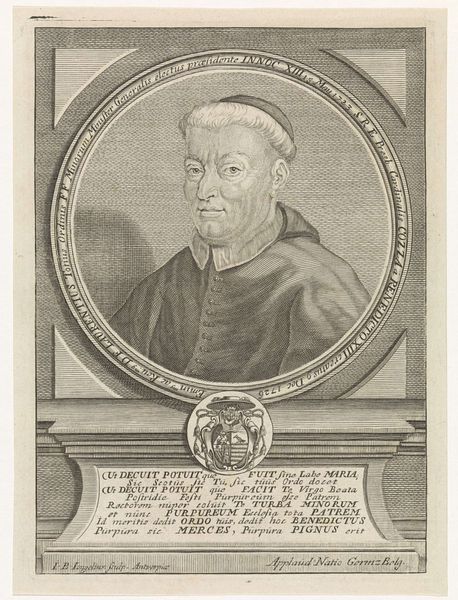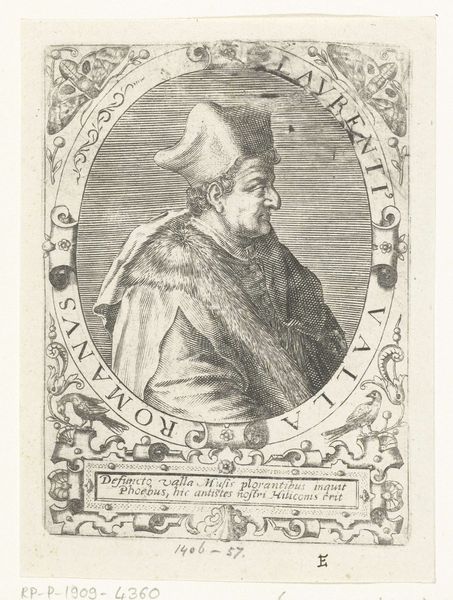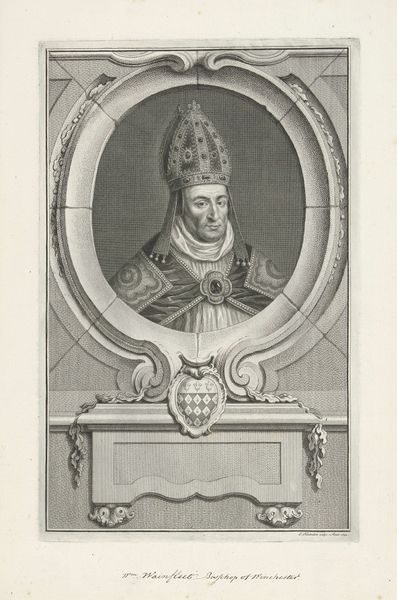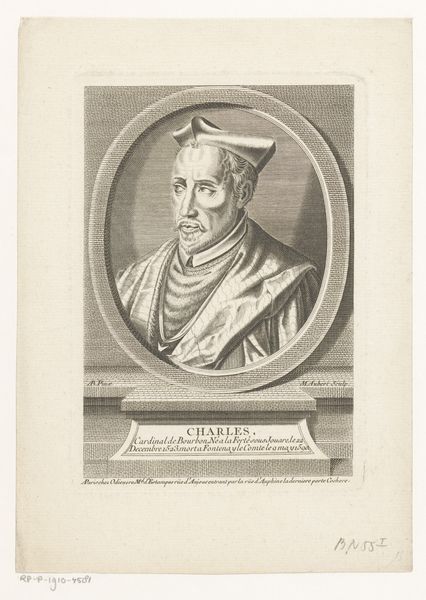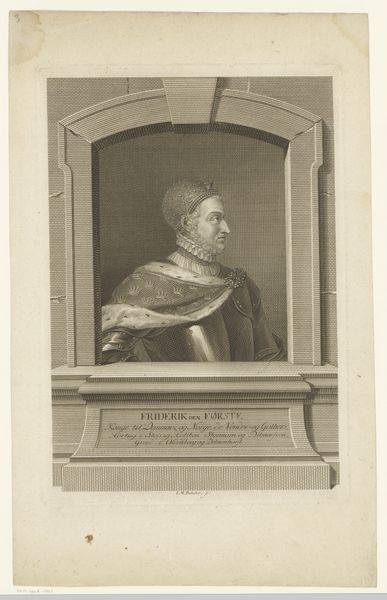
print, engraving
#
portrait
#
baroque
# print
#
old engraving style
#
history-painting
#
engraving
Dimensions: height 190 mm, width 137 mm
Copyright: Rijks Museum: Open Domain
François Harrewijn created this portrait of Willem Hessels van Est, sometime in the early 1700's, using engraving techniques. Engraving is an intaglio process; lines are incised into a metal plate, which then holds ink and transfers the image to paper. The crisp, precise lines you see here are characteristic of this process. Look closely, and you'll notice how the varying density of lines creates subtle tonal variations, giving form to the figure's face and clothing. This was painstaking work. Each line had to be carefully cut into the metal, requiring great skill and control. The resulting print, though, could be reproduced multiple times, allowing for wider distribution of the image. This speaks to the social context of the time, where printed images played an increasingly important role in disseminating information and ideas. The act of engraving itself, with its meticulous labor, reflects a society that valued both craftsmanship and the power of mass communication. By understanding these processes, we gain a deeper appreciation for the art and its place in the world.
Comments
No comments
Be the first to comment and join the conversation on the ultimate creative platform.

